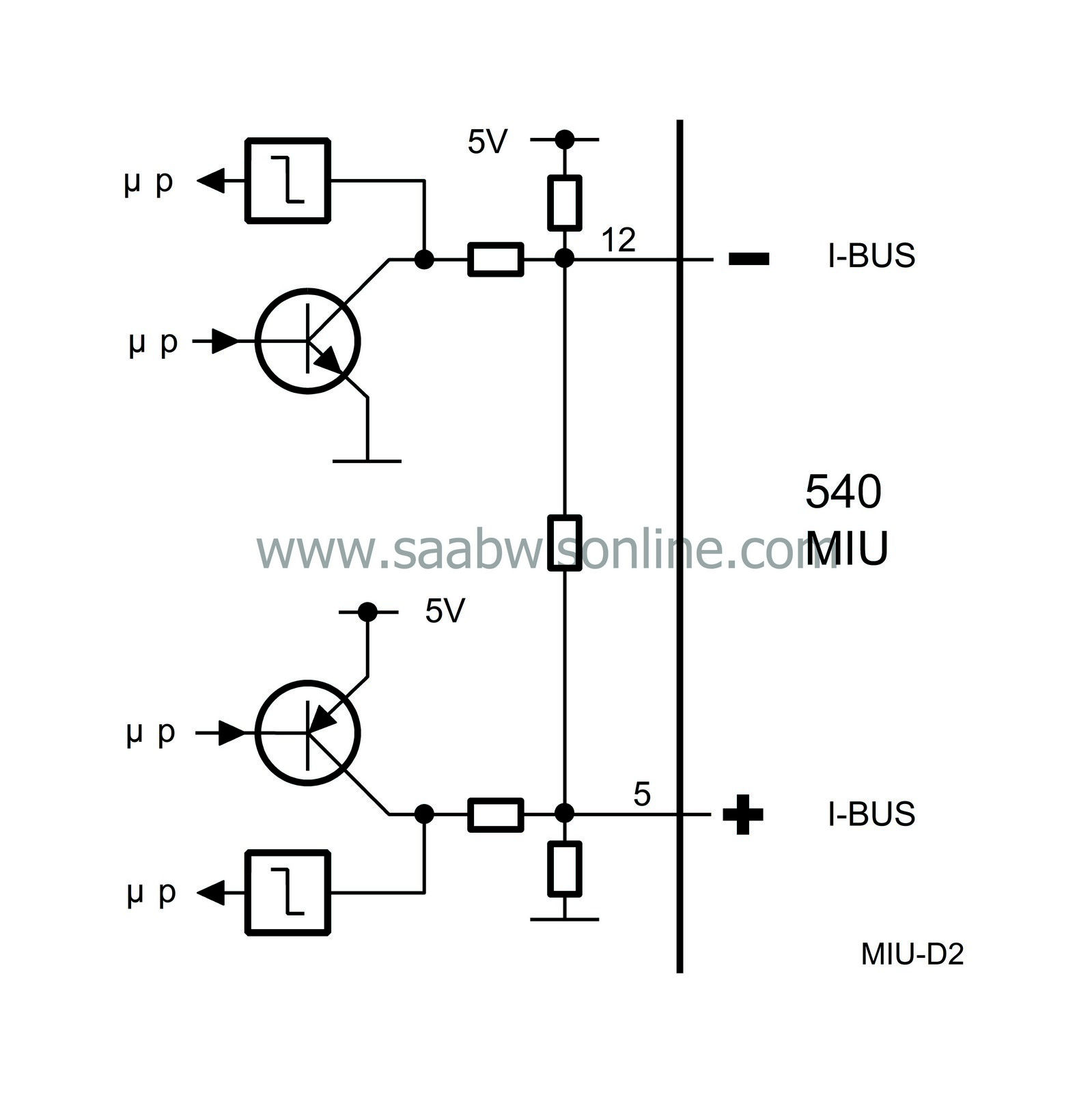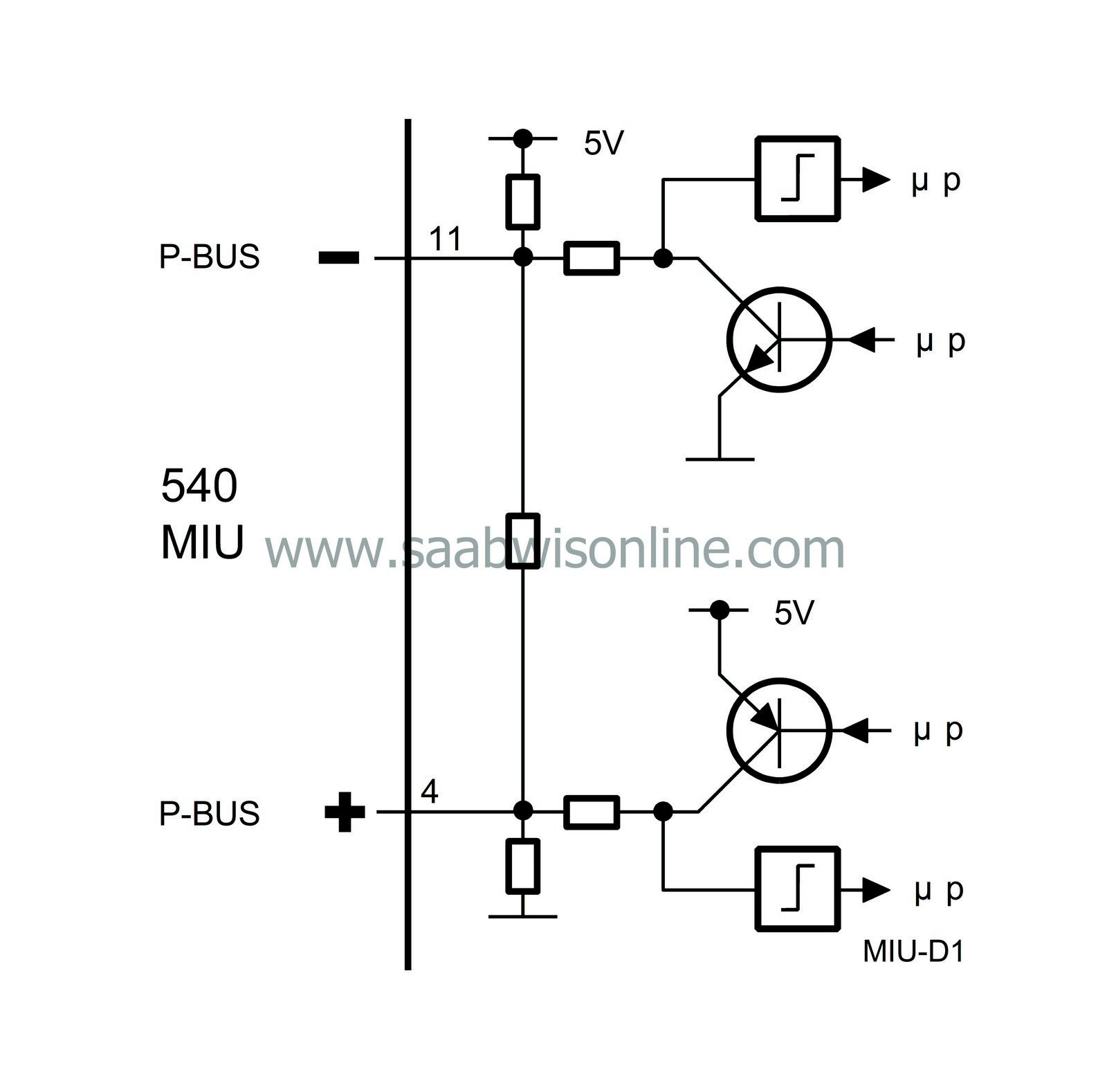Bus messages
| Bus messages |

A bus is understood to be the leads over which information is sent digitally and serially. Digital means that the voltage difference between the leads has only two values, roughly 0 V and 5 V. The information is coded so that different combinations of 0 V and 5 V pulses have different meanings.
Serial means that the information is sent in ”packets” one after the other in rapid succession.
The bus is divided into the P-bus (Powertrain Bus) and the I-bus (Instrument Bus). Both buses are connected to the main instrument unit (MIU). The buses are electrically isolated from each other.
As in the 9-5, the Airbag and SRS control modules are not connected to the bus. The TC/ABS control module on cars with Traction Control is connected to the P-bus.
The diagnostic tool is not directly connected to the bus but communicates via DICE, which is connected to the I-bus, and therefore has access to all the control modules connected to the bus.
The P-bus has a data transfer rate ten times higher than that of the I-bus. This is because the P-bus requires information with the least possible delay.
All the information sent from one control module is accessible to all the other control modules on the bus. The MIU is responsible for making information on one bus available on the other bus.
The control modules send out information on the bus at regular intervals. The time between two transmissions depends on the information being transmitted and varies between 10 milliseconds (0.010 seconds) and one second. Information is also transmitted by the control module whenever the information changes.
The transfer of information between control modules takes place on two leads, bus+ (green lead) and bus- (white lead). The leads are twisted to increase their resistance to electrical interference.
| The MIU uses the following information: |
| The MIU sends the following information: |



